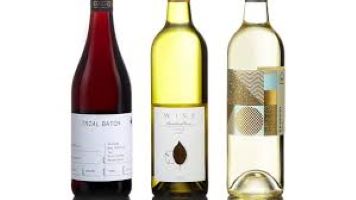Jancis Robinson’s 1242-page masterwork Wine Grapes describes 1368 different grape varieties, so the 140 planted in Australia, covered in my Varietal Wines (Hardie Grant 2018) barely scratches the surface of the gene pool. Moreover, the pool continues to grow, with Italy’s 380 varieties including many found near extinction in the 1990s and resuscitated for commercial propagation – an ongoing scenario.
Vines are hardy plants needing only CO2, water, soil and sunshine-generated warmth. How much warmth is needed depends on the variety, some able to deal with a wide range of temperatures (for example riesling, shiraz and chardonnay), others a narrow range (examples pinot noir and pinot gris).
Historically, the varieties grown in France, Italy and Germany were planted in an environment with just sufficient growing season warmth to bring the grapes to maturity in a well managed vineyard planted on well drained soil. For 700 years much of the vineyard and winery work of France was the responsibility of monks whose concept of time reflected itself in patient attention to the finest details, and a strictly non-judgemental approach if the weather turned wet and cold, making it impossible to harvest mature and healthy grapes.
Robinson uses a schematic table defining four climate groups: cool, intermediate, warm and hot. Muller thurgau, pinot gris and gewurztraminer are at the cool extreme; riesling and pinot noir crossing from cool to intermediate; grenache, zinfandel and nebbiolo crossing from warm to hot. The middle ground is split between intermediate and warm, and captures roughly 80% of all varieties. Dr John Gladstones uses a similar table linking regions (not varieties) to climates ranged through hot, warm, temperate and cool.
The earliest-ripening varieties were chosen for the cooler parts of the host country: pinot noir and chardonnay in Burgundy and Champagne, riesling in the Mosel Valley, cabernet sauvignon in Bordeaux, and shiraz in the northern Rhone Valley. These became the varieties permitted under the appellation laws codified in the 1930s. The present day warming growing seasons have been particularly welcome in Champagne.
Mid-ripening varieties include semillon, tempranillo, cabernet franc, merlot, malbec, cabernet sauvignon (just) and that Jack of All Trades shiraz. The late-ripening, sun-seeking varieties are sangiovese, grenache, zinfandel, and that most challenging of all varieties, nebbiolo.
Shiraz and chardonnay are both grown successfully in every Australian region, each with a clear varietal inflection depending on the climate/terroir in which they are grown. Pinot gris is the odd bod. Some is planted in the highly rated Burgundian producer Domaine de l’Arlot (sanctioned by the age of the vines, but not permitted nowadays). Odd bod, because its Australian crush of 70 000 tonnes in 2020 puts it in third place behind chardonnay and sauvignon blanc. It is planted absolutely everywhere in Australia, and clearly will pay no attention if climate warms, as it has already migrated from cool to hot climates.
Nebbiolo has been planted in 20 regions, the most logical Hilltops and Pyrenees; fiano in 24 regions ranging from cool to hot (but has taken most in its stride, and will have an ongoing place in the Australian wine lexicon); and gruner veltliner in 13 regions, all but two cool, led by the Adelaide Hills.
But wait: theory is being challenged by the consequence of growing vines (and all plants) in an environment of increasing CO2 and rising temperatures. The process of photosynthesis works more effectively enabling vines to initiate grown earlier and carry the ripening process more effectively.
Thus pinot gris is planted everywhere, its 70,000-tonne production third behind chardonnay and sauvignon blanc. On the converse side, the supposedly late-ripening, heat-seeking grenache has produced truly beautiful wine in the Yarra Valley.
I’m sure Kim Chalmers (of Chalmers Wines, which is far and away the most active importer of varieties new to Australia, www.chalmers.com.au) would say her order book contains some strange orders for theoretically unsuitable varieties given the climate of the winery placing the order. So expect to see varietal wines with names you have never heard of.
2018 Handpicked Trial Batch Pyrenees Nebbiolo
Destemmed, open-fermented, hand-plunged and matured in used French barriques for 10 months. 11 weeks post-ferment maceration has worked well, with spice, rose petals, tar and red cherries on the super-fragrant bouquet and palate. Bargain. 14.4% alc, screwcap 93 points, drink to 2025, $29
2020 Wise Leaf Series Frankland River Fiano
Part fermented in barrel, part in stainless steel. There’s a growing sense that suggests fiano may one day join tempranillo as a variety of real worth, not dependent on fads. This wine has a broad citrus spectrum, and white pepper reminiscent of grüner veltliner. 13% alc, screwcap 95 points, drink to 2029, $35
2020 Hahndorf Hill Winery White Mischief Adelaide Hills Grüner Veltliner
Small bunches started the ball rolling for a wine with an excellent mouthfeel and a faint white pepper varietal marker. The length and drive on the finish gives this wine serious gravitas. With the vinification, careful attention to detail is its own reward.13% alc, screwcap 95 points, drink to 2023, $24
Please note: James has included more information in the Cellardoor Challenge version; he’s not limited by word count.


